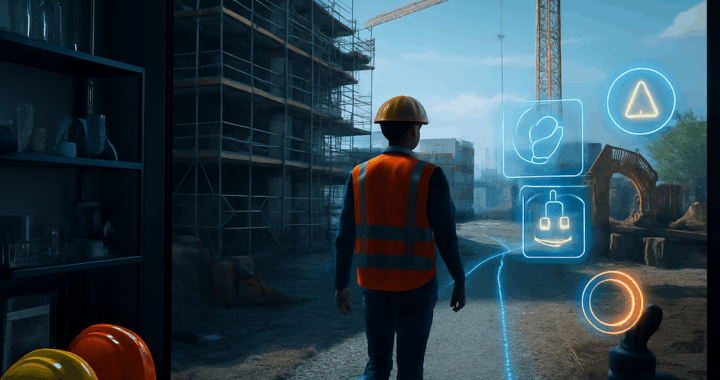Training is perhaps the single most important aspect of a safety program. Building on this core idea, this post explores a university research topic that aims to educate construction workers about the basics of safety using a cutting edge training module. The article outlines a feasible research plan that blends learning science with immersive technology to improve safety outcomes on real jobsites.
Overview
The proposed topic centers on a three dimensional training module that can be traversed like a video game. It is designed to run on standard desktops and VR headsets, offering two distinct play modes. The first mode is a project walk through where the trainee encounters various unsafe conditions and violations of OSHA regulations. As the trainee moves through the virtual site, a pop up message appears next to each condition, delivering concise, practical information about the safety fundamentals related to that condition. The second mode is an evaluation walk through in which the trainee must identify the safety violations present in the environment. This combination mimics real world decision making while reinforcing safety knowledge.
Research Questions
- Does immersive 3D safety training improve retention of fundamental OSHA requirements compared to traditional classroom based methods?
- To what extent does a gamified training approach influence transfer of training to actual worksites?
- What design features (narrative, feedback timing, level of challenge) maximize learning and engagement without increasing cognitive load?
- How do adult learners with different experience levels respond to immersive safety training?
Methodology
The research plan combines instructional design, software development, and rigorous evaluation. A 3D construction environment will be created using a game engine, with realistic models of scaffolding, ladders, PPE, machinery, wiring, and fall protection systems. The module will support two modes as described above. A randomized study will be conducted with participants drawn from construction, engineering, and safety programs. Participants will be assigned to either the immersive training condition or a traditional training control group. Data will be collected on knowledge gain, speed and accuracy in identifying violations, time to complete tasks, and subjective measures of engagement and perceived usefulness.
Evaluation will include pre tests and post tests of safety knowledge, a performance based assessment on the virtual walk through, and a follow up assessment to measure retention. A control group will receive standard safety training materials such as lectures and checklists. The study will also examine how different user interfaces, such as VR headsets or desktop controls, affect learning outcomes and user experience.
Theoretical Framework
The project rests on established learning theories and safety psychology. Situated learning and constructivist theories suggest learners build knowledge through authentic contexts. Gamification and serious games offer motivational mechanisms that can increase engagement without sacrificing transfer to real world tasks. Cognitive load theory informs how to present information so that learners can process safety rules without overload. The research will also consider transfer of training theory to ensure that what is learned in the virtual world translates to safer behavior on real construction sites.
Expected Outcomes and Contributions
Expected outcomes include improved retention of safety basics, faster recognition of hazards, and better decision making under simulated pressure. The research could provide evidence on the effectiveness of immersive training for construction safety and offer a scalable model that universities can adopt. The findings will contribute to the literature on training design for safety education and align with Dr. Hinze’s emphasis on practical, evidence based approaches to reducing accidents and injuries in construction.
Practical Implications
The proposed module could become a core component of university safety curricula, continuing education for professionals, and onboarding programs on construction sites. Because the module is modular, it can be updated as regulations evolve and can be adapted to different construction contexts such as residential, commercial, or industrial projects. The research could also support cost effective training by reducing the need for costly live site tours, while maintaining high learning impact.
Ethical Considerations
Research will follow ethical guidelines for human subjects, including informed consent, data privacy, and the right to withdraw. The study will ensure that participants understand the simulated environment is safe and does not pose actual risk. If VR is used, care will be taken to prevent motion sickness and to provide accessible options for participants with different abilities.
Conclusion
A 3D immersive training module for construction safety offers a promising direction for university research. By combining a realistic training environment with a strong evaluation mechanism, this project seeks to improve both knowledge and behavior, ultimately contributing to safer worksites and a stronger safety culture in the construction industry.

